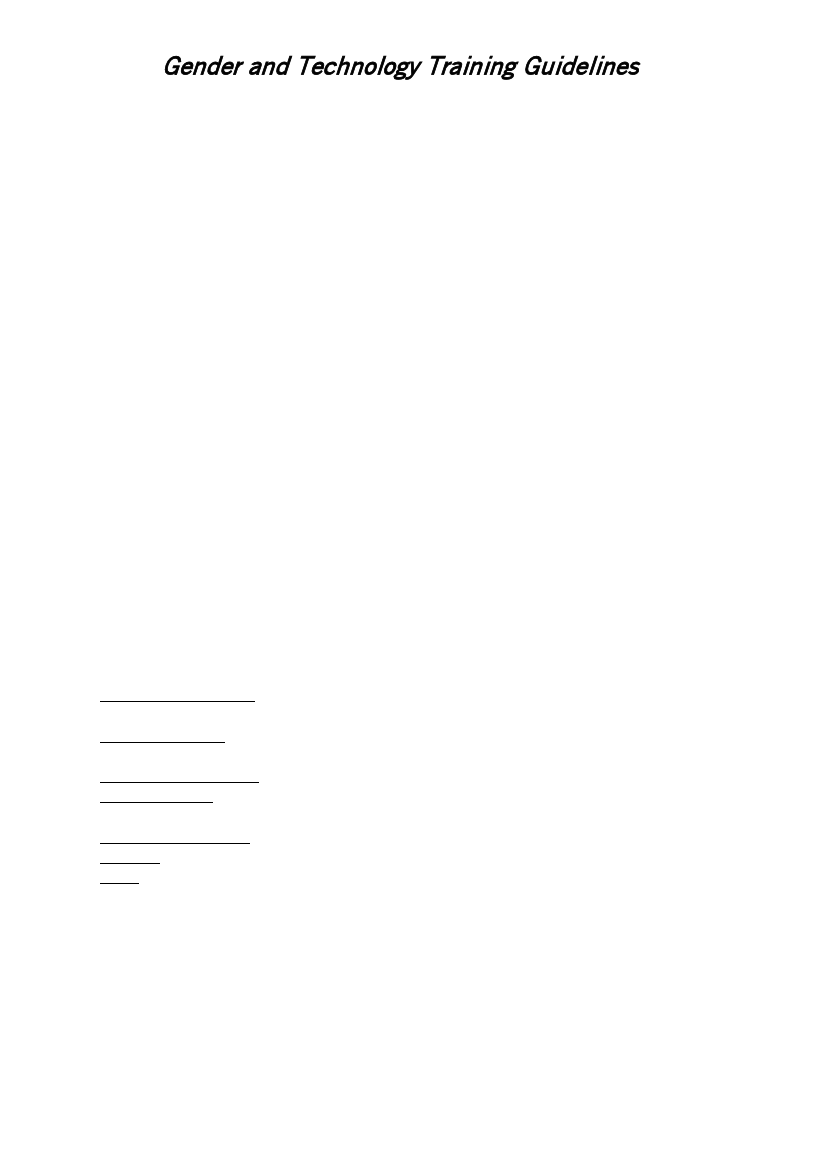
Gender and Technology Training Guidelines
STEP 2 - ACCESS AND CONTROL DIAGNOSIS
This step is about including in training and other activities, issues about women and
men’s access and control to resources and the flow of benefits to women and men.
Consider first
How much is known in your work about who has access to and control over the
following resources:
Land, Capital, Labour, Skills/technologies, Education, Credit/savings, Information,
Political power.
In relation to the above, are there any implications in the work that you are doing for:
Changing patterns of access to the resources required for training or other activity?
Changing the current patterns of control over resources?
Introducing extra components and/or training so that women and men can benefit
equally from resources?
Introducing extra components so that women and men benefit equally from the
training the project provides?
Addressing issues around land ownership?
Addressing issues of access to credit?
Addressing issues of women's participation in the activity?
Addressing issues of women's access to decision making?
STEP 3 - OPPORTUNITIES AND CONSTRAINTS
This step is about including in training external factors which affect the lives of men
and women differently.
Consider first:
How much your work includes a genderal understanding of:
Socio-cultural factors - social norms, social organisation, traditions, religion,
organisational and institutional arrangements?
Economic factors - level of poverty, inflation, infrastructure, income distribution,
economic organisations?
Environmental factors - quality and availability of land, availability of water, fuel?
Political factors - power relationships, influence of government, legal systems,
community organisation?
Demographic factors - migration, life expectancy, mortality?
Services - government, extension, education, health care, funding?
Legal - right of ownership, franchise, inheritance
In relation to the above, are there any implications for work that you are doing:
Changing existing perceptions and beliefs about the use of technology by women and
men?
Addressing economic issues which affect women’s use of technology?
Addressing environmental issues that are crucial to women?
Improving institutional services so that women and men benefit equally?
STEP 5 ANALYSING GENDER NEEDS AND INTERESTS
88